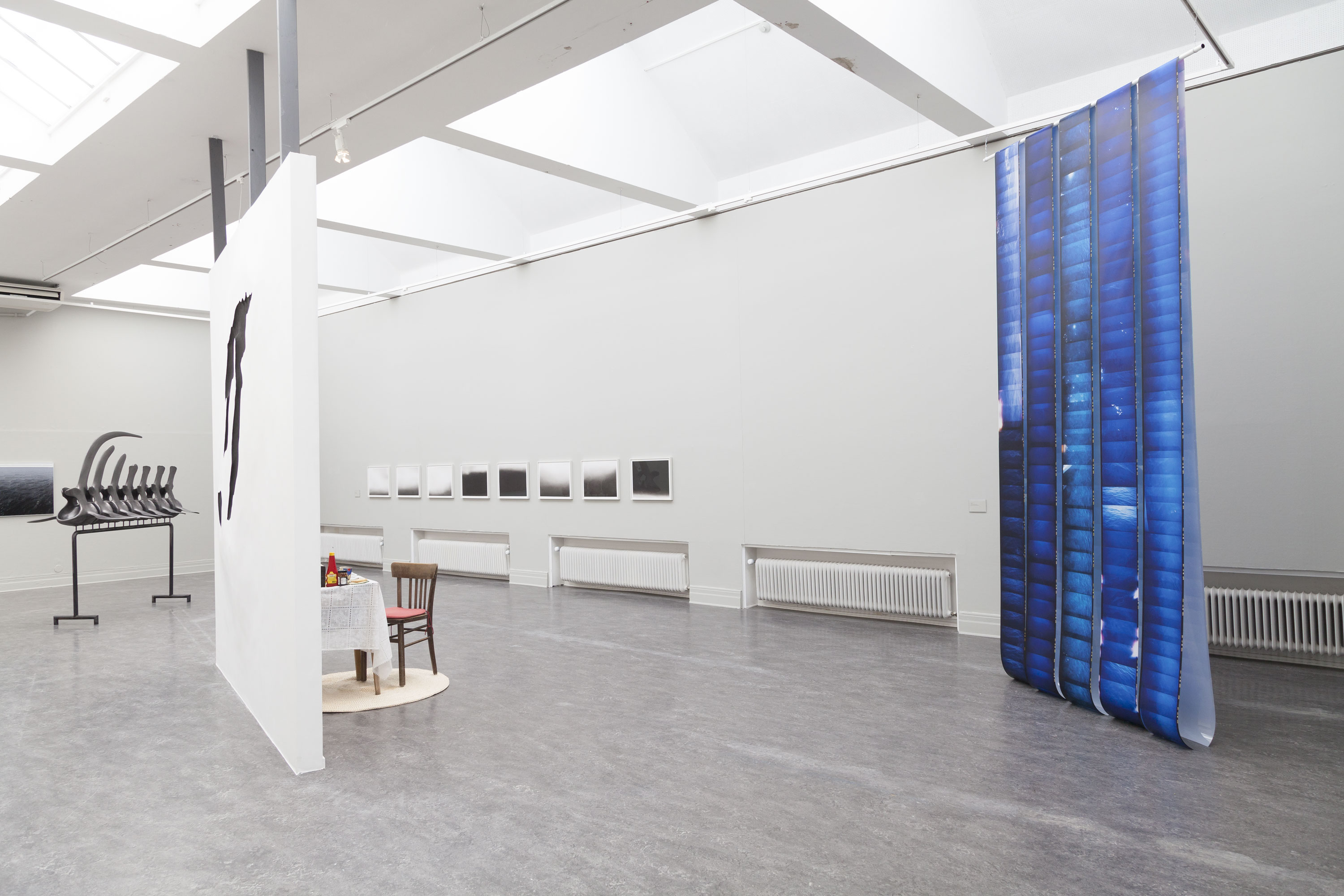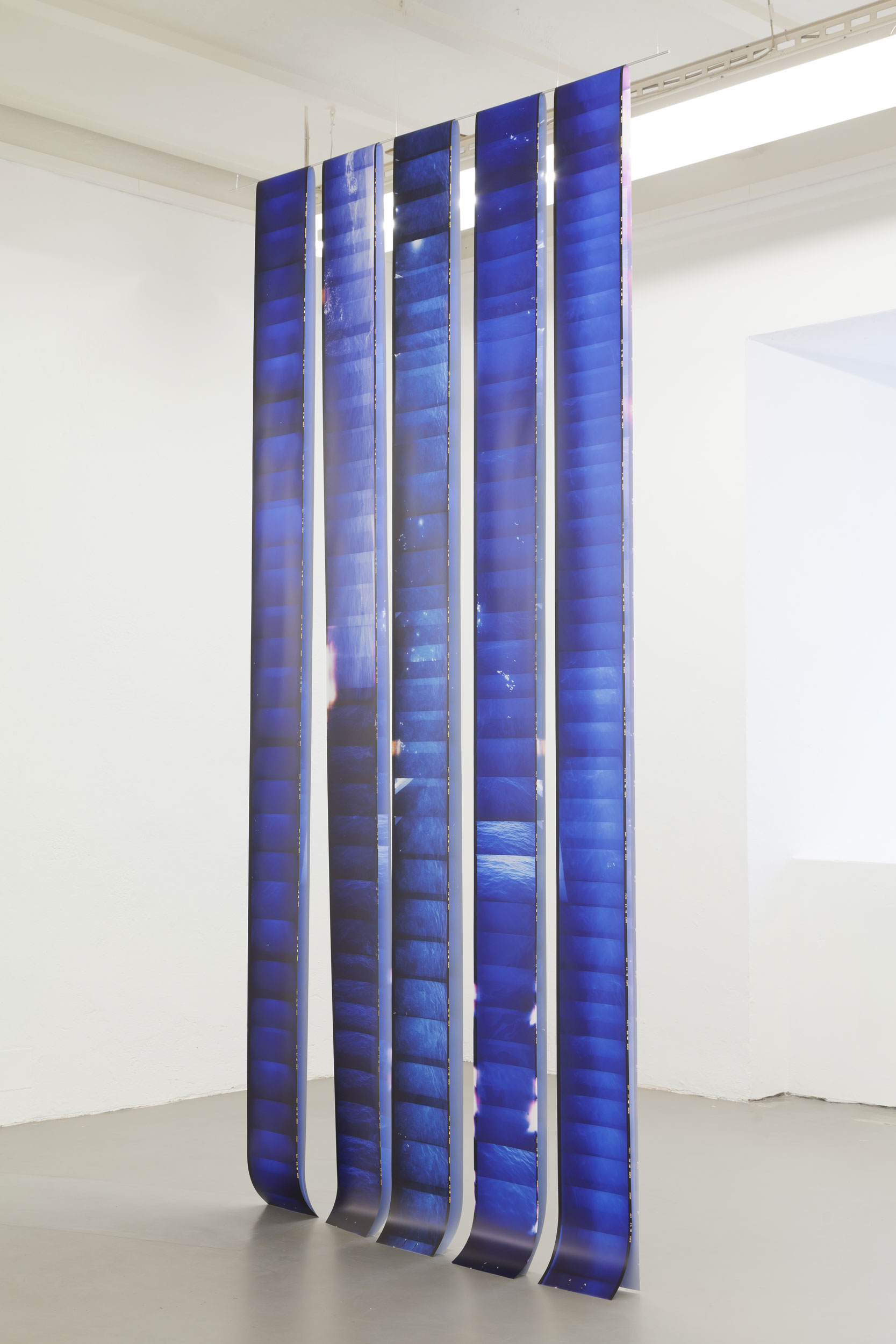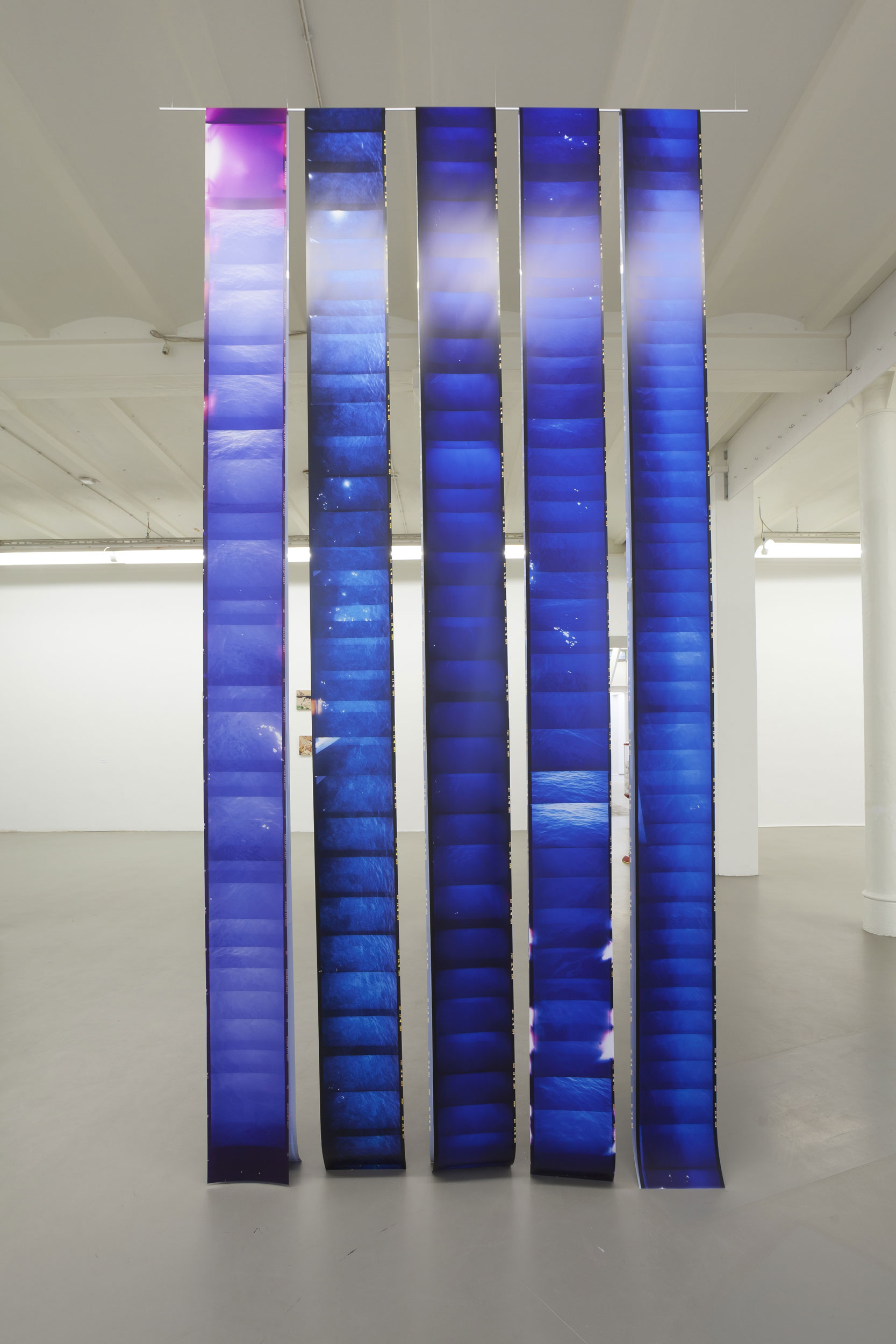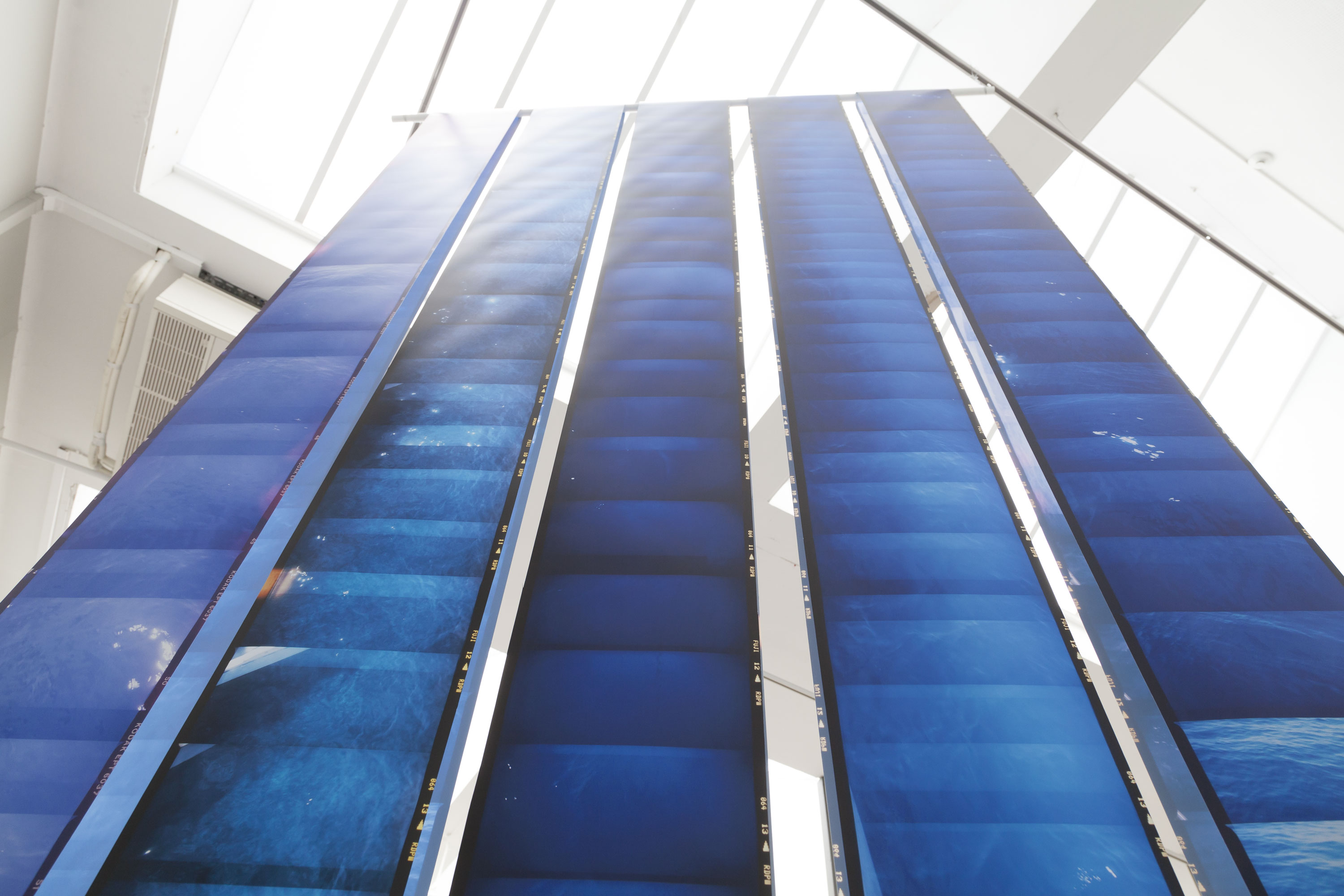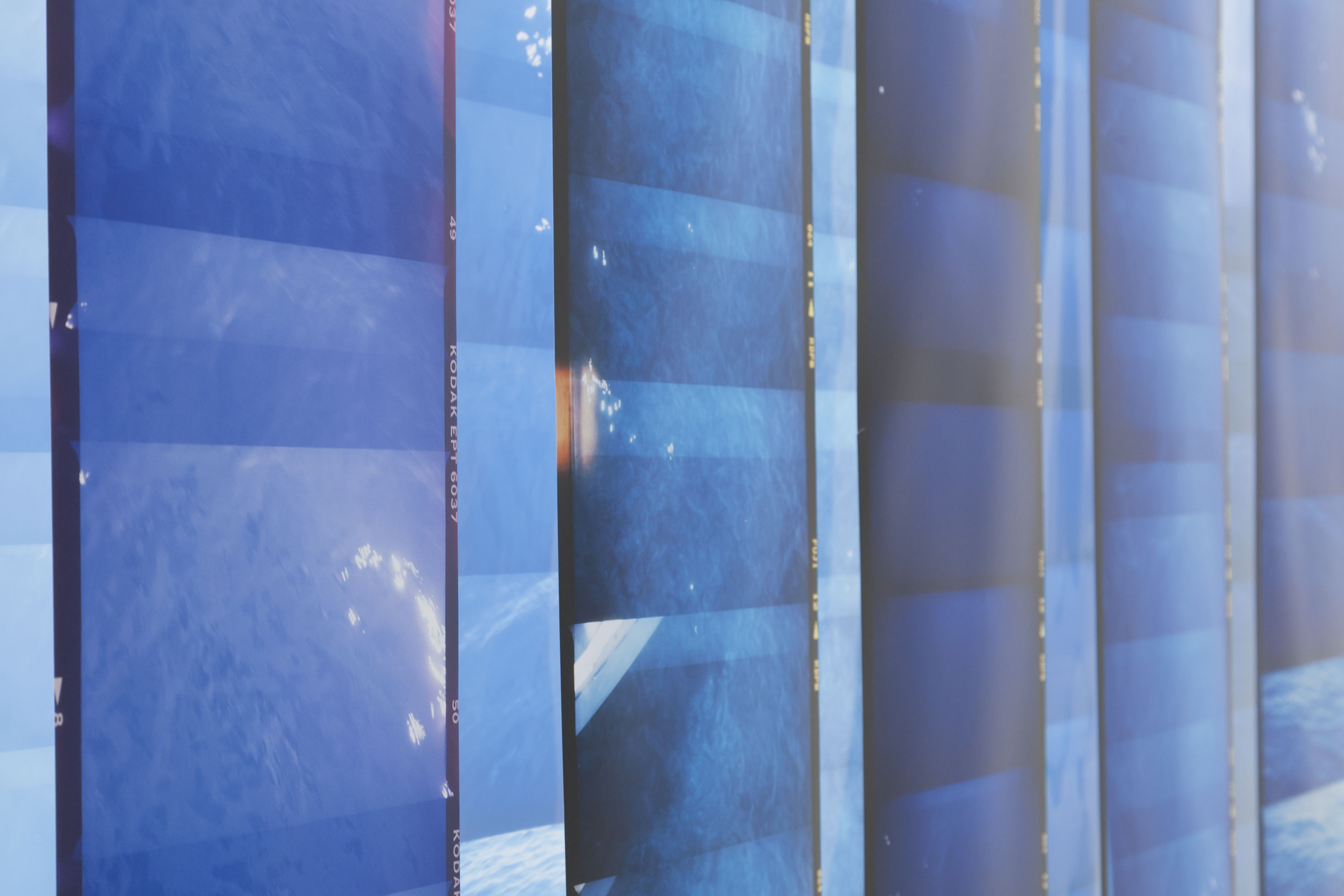how to stop breathing
2018
photography
prints on transparent film
each 370 x 27 cm
exhibited at "deep sea" at Städtischen Galerie Bremen and at Ystads Konstmuseum Sweden
Sara Förster submitted herself to a personal experiment. Over a period of several months, she placed her own experience at the centre of an artistic research project. In order to approach the subject of the deep sea, she decided to learn apnoea diving, which allows her to stay in that habitat for as long as possible without oxygen and without using mechanical aids.
This old method, based on extremely long breath-holding, has been used by pearl divers, for example, since time immemorial. In recent times it has become an extreme sport, with the demand for ever-longer diving times. For Sara Förster, a fascination for an action that runs contrary to human instinct and the experience of a world that otherwise remains inaccessible to us were the motivation to learn what apnoea divers are driven by.
Förster moves past the absurdity that a life under water is denied to humans, and her dives open up one of the most fascinating and alien worlds we know, one which is also the origin of all life. An experience and brief conquest of this world is thus also a futile return to origins: an absurd metaphorical attempt to overcome a billion-year alienation. What she finally found, and had partly anticipated, was the boundlessness of her surroundings, the unobstructed view of the living underwater world, and the shifted perception that is as dangerous as it is fascinating when temperature, pressure, light, and the ability to verify this environment through one’s own senses change.
As a photographer, Förster concentrated on the very fundamental aspects of her experiment under water and translated them into images using an analogue medium-format camera and slide film. We don’t see any strange deep-sea creatures, nor any hallucinations generated by nitrogen narcosis, although her photographs do suggest a deep psychedelic experience. Instead, Förster tries to find a visual language for the diving experience itself – through a series of photographs in which images of water overlap, where it cannot be said whether the water was photographed from inside or outside, from below or above.
The boundlessness of the sea, the seemingly infinite possibilities associated with it, and the perception of weightlessness, which as an experience also creates a physical dissolution of boundaries, are represented in the equally borderless photographs. In them, the visible superimpositions of water make it impossible to say which layer lies above which.As a mode of exhibition, Sara Förster also stages this as a sensual experience by showing the photographs on a transparent background into which viewers can visually enter. And she presents the photographs as a series whose beginning and end are not fixed.
In doing so, Förster reveals her medium and its use, showing us not only the images but also their carrier: the slide film with its numbered frames. She thus focuses on the temporal sequence, on the process and, by means of the repeating colours, the similarity of the images, on the ascent and descent, which actually negates a distinction of categories such as “above” or “below”. The viewer’s visual reception of the photos follows this artistic process. Our categories of reception are doubted, as is the certainty of perception. No knowledge – not even about apnoea diving – is conveyed, as at the core of the work is the perceptual awareness that we are perceiving.
Ingmar Lähnemann
